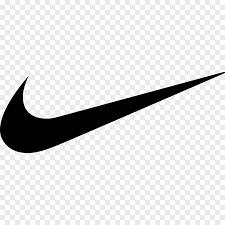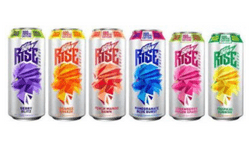Anybody who has tried will agree that choosing a trademark for your product or service isn’t easy. Yes, you have to choose the right mark but then you have to make sure that nobody else has made the same (or similar) choice. More often than not, you discover truth in the adage that there’s no such thing as an original idea.
Although trademark selection may be a frustrating ordeal, understanding the purpose of a trademark may ease the process. Trademarks are source identifiers. It takes time and resources to establish a consumer association between a product and its source, (i.e., your business) but by using a strong trademark, particularly in a crowded consumer field, the association may grow rapidly. On the other hand, weak trademarks create noise and distraction, slowing down or even stopping the ability of consumers to associate your product with your company.
Businesses often believe descriptive trademarks are the “best” trademarks. This is a fallacy. For example, calling your hamburger product, JUICY, tells customers that you market juicy hamburgers. That may be great for marketing, but trademarks are source identifiers. Will you be able to create an association between your company and JUICY hamburgers? It will be difficult. Other companies may market their hamburgers as “juicy” too. JUICY is a weak, descriptive trademark when applied to hamburgers.
When selecting a trademark, understand that all trademarks are not created equal. In ascending order of strength, from weakest to strongest, trademarks can be:
- generic,
- descriptive,
- suggestive, or
- arbitrary.
Generic terms can’t serve as trademarks at all (you can’t use the term APPLE as a mark for fruit) while arbitrary trademarks are the strongest and most distinctive (for example, APPLE to identify computers). Remember KODAK film? The term KODAK says nothing about the film but you know who made it. Images may be arbitrary, too. Take for example, the swish, an arbitrary symbol:
One immediately associates it with the Nike Corporation, not just shoes or just t-shirts. The presence of the swish on the product establishes an association between it and the company that manufactures, markets and sells the product. That’s what a source identifier does. A recent case illustrates the point.
In Riseandshine Corporation, dba Rise Brewing v. Pepsico, Inc., Rise Brewing, which markets a cold brew coffee drink under the RISE trademark sued Pepsico for trademark infringement on grounds that its line of MTN DEW RISE ENERGY drinks would cause a likelihood of confusion with Rise Brewing’s trademark. Here is Rise Brewing’s trademark:
And here is Pepsico’s:
The U.S. District Court granted Rise Brewing a preliminary injunction, which was reversed by the U.S. Circuit Court of Appeals for the Second Circuit. No need to explore the details of the litigation, but what the Appellate Court said about the strength of the RISE trademark bears directly on our discussion here. The Circuit Court held that the “district court failed to recognize the inherent weakness of plaintiff’s mark.” It wrote, “the strength of a mark depends ultimately on its distinctiveness, or its “origin-indicating” quality, in the eyes of the purchasing public….The strength of the trademark is assessed based on either or both of two components: (1) the degree to which it is inherently distinctive; and (2) the degree to which it has achieved public recognition in the marketplace, sometimes called acquired strength.” The Circuit Court continued (citations omitted):
Inherent strength or weakness of a mark is frequently an important factor because strong marks command a wider scope protection than weak marks. The trademark law allows every marketer to identify itself as a product’s source by use of a distinctive mark, which will allow the public to recognize it as the source of the product, rewarding a marketer if it has earned a good public reputation and punishing it if the public’s prior experience has been disappointing.… So long as marketers select words or signs that have no logical relationship to the product or services on which they are used, there will never be a shortage of marks. Trademark law favors the use of marks that are arbitrary or fanciful in relation to the products on which they are used. This is because such distinctive marks make it easier for the public to avoid confusion and because allowing the owner a broad exclusivity for such a mark detracts little from free expression, as other marketers of similar products have no justified interest in using such words to identify their products.… In contrast, trademark law offers a much narrow scope of protection to marketers who seek to bar others from using words that describe or suggest the products or the virtues of their products.”
If you are interested in this topic we strongly recommend reviewing the broader discussion contained in this opinion. For now, back to the facts. The Circuit Court, applying these principles, concluded that the term “rise” and coffee “represent weakness and place the mark at the low end of the spectrum of suggestive marks.” The court’s reasoning presents a good lesson on how to identify a suggestive trademark:
In its ordinary usage, “Rise” suggests waking up and “rising” from bed. Rising is generally associated with the morning, a time when many crave a cup of coffee, relying on its caffeine to jumpstart their energy for the day.… The proposition that one isn’t fully awake until one has had one’s morning coffee is a cliché.
The word “Rise” may also refer directly to energy itself (e.g., Pepsico’s use of the term); after consuming caffeine, one’s energy levels can be expected to “rise.”
The distinction between what is a good trademark under the law or a good marketing phrase is often a source of confusion. Merely because a term such as “Rise” is a good marketing term does not mean that it is an enforceable trademark under trademark law. In fact, according to the Circuit Court “[b] because the word “Rise” is so tightly linked with the perceived virtues of coffee, the mark is inherently weak and commands a narrow scope of protection.” The court went on to note that a survey of the beverage market underscores the weakness of the mark. Pepsico presented evidence of over 100 users of the term “Rise” in connection with beverages as well as health supplements, yogurt and granola.
The takeaway is clear. Avoid descriptive or suggestive trademarks. Arbitrary trademarks are the strongest and the most likely to establish your brand. As the court so eloquently wrote, “.… So long as marketers select words or signs that have no logical relationship to the product or services on which they are used, there will never be a shortage of marks.”
— Adam G. Garson, Esq





